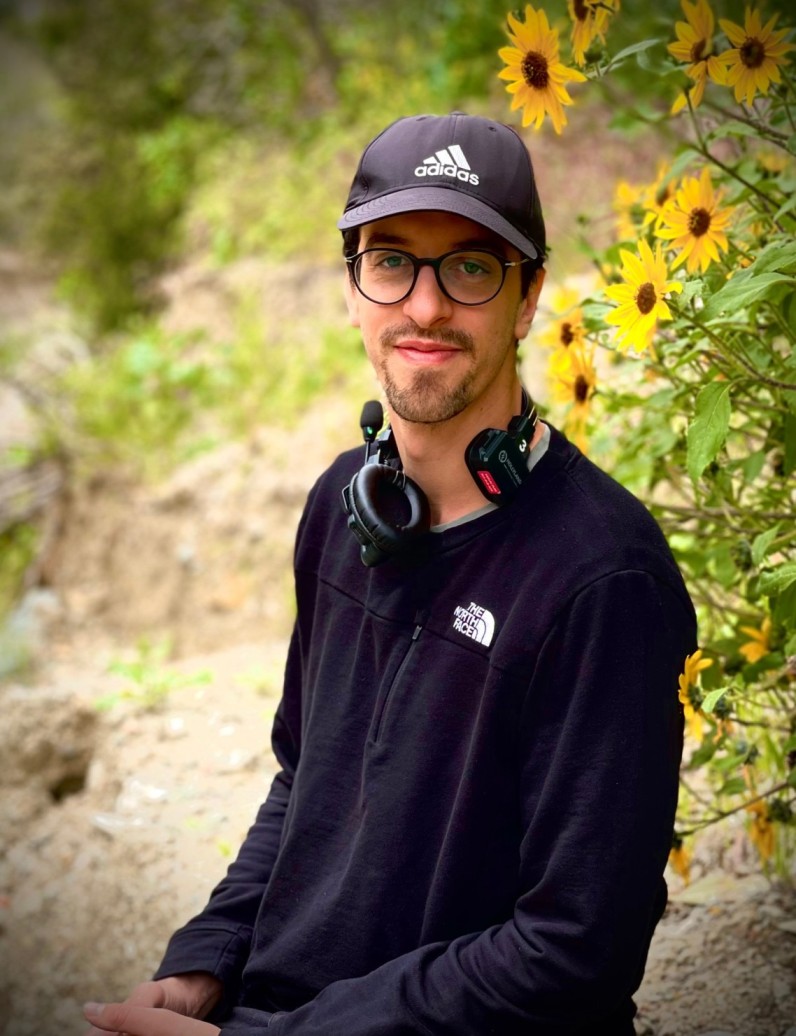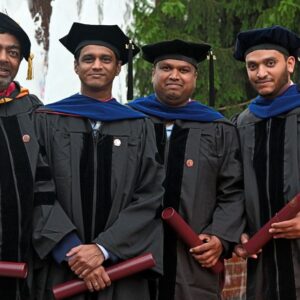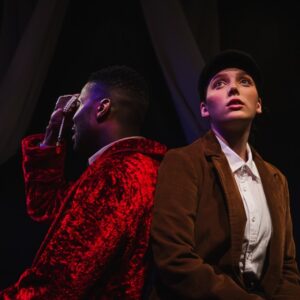Collaboration is a key aspect of filmmaking. How do you approach working with directors to bring their vision to life?
Collaborating with directors is a dynamic and vital aspect of my role as a cinematographer. I begin by engaging in thorough discussions with the director to understand their vision, thematic goals, and emotional intentions for the project. This initial dialogue helps establish a creative foundation and ensures that our visual language aligns with the narrative.
Throughout the production process, I maintain open lines of communication, encouraging the director’s input and feedback. Flexibility is key; I adapt my decisions to best serve the director’s vision while offering creative suggestions to enhance the storytelling through visuals. It’s a symbiotic relationship that involves mutual respect, trust, and a shared commitment to bringing the director’s vision to life.
Can you share a particularly memorable or challenging experience from a film set where collaboration played a crucial role?
One memorable collaboration occurred during the filming of MyDorian for sure. The director had a distinct vision for a pivotal emotional scene, and we faced the challenge of capturing the intensity of the moment within a tight schedule and limited resources.

Through collaborative brainstorming with the director, we devised a creative solution that involved some hard lighting coming from outside, some hitting the actors directly and some pointed towards the ceiling where we placed some white bounce. The director wanted the freedom of moving the camera 360 degree so no lights were safe. The entire crew, including the gaffer and grip, played instrumental roles in executing the vision. The successful outcome was a testament to the power of collaboration, where each team member’s expertise contributed to overcoming challenges and elevating the emotional impact of the scene.
How do you foster strong relationships with other members of the film crew, such as the gaffer and grip?
Building strong relationships with the film crew is essential to achieve a seamless collaboration. Open communication, mutual respect, and a shared dedication to the project are the foundations of these relationships.
Regular pre-production meetings with key crew members, such as the gaffer and production designer, allow us to align our creative objectives and address potential challenges proactively. During filming, I prioritize a collaborative atmosphere on set, encouraging the exchange of ideas and input from all team members. Recognizing and appreciating the expertise each crew member brings to the table fosters a sense of unity and ensures that everyone is invested in achieving the project’s visual goals.
In your opinion, how does effective collaboration enhance the quality of a film?
Effective collaboration is the heartbeat of a successful film. When each member of the team, from the director to the cinematographer, gaffer, grip, and beyond, works cohesively towards a common goal, the result is a harmonious fusion of creativity and technical proficiency.
Collaboration enhances the storytelling by bringing diverse perspectives and skills to the table, leading to a more comprehensive and layered visual narrative. The synergy between different departments ensures that the film’s visual language is cohesive, reinforcing the emotional beats and thematic elements. Ultimately, effective collaboration elevates the overall quality of a film, turning it into a collective masterpiece.
What role does storytelling play in your approach to cinematography, especially when collaborating with directors?
When collaborating with directors, I see myself as a visual storyteller whose role is to enhance and amplify the narrative through the language of images.
Understanding the emotional beats, character arcs, and thematic nuances is fundamental to my creative decisions. The collaboration with the director revolves around translating these elements into a visual tapestry that resonates with the audience. Every lighting choice, camera movement, and framing decision is made with the overarching goal of enriching the storytelling experience, ensuring that the visuals seamlessly integrate with the director’s narrative vision.
How do you navigate the balance between your artistic vision and the practical needs of a film production?
Balancing artistic vision with practical production needs is an ongoing challenge that requires adaptability and strategic decision-making. While I am committed to preserving the creative integrity of the project, I also recognize the importance of pragmatism in the face of logistical constraints.
This involves proactive planning during pre-production, anticipating potential challenges, and finding creative solutions that align with both the artistic and practical aspects of the production. Collaboration with the production team is key in this process, ensuring that compromises, when necessary, are made without sacrificing the essence of the story.
Can you share an example of a project where finding this balance was particularly challenging, and how did you approach it?
One challenging project where balancing artistic vision and practical needs was crucial was for Sunshine Marketing. The storyline and type of shooting style, demanded intricate sequences with complex coverage. We used 3 cameras to do as many coverage as possible without re doing the scene too many times. That would have compromised the performance and effectiveness of the mockumentary style we were looking for.
To navigate this, I collaborated closely with the production team to optimize resources and streamline the shooting schedule. Creative compromises were made without compromising the visual impact, and we implemented innovative lighting techniques to achieve the desired atmosphere within the constraints. This experience highlighted the importance of flexibility, collaboration, and inventive problem-solving in finding the delicate balance between artistic vision and practical considerations.
How do you adapt to working in different cultural environments, and what challenges and benefits does this bring to collaboration?
Adapting to different cultural environments is an enriching aspect of my work. It involves not only understanding the cultural nuances but also embracing diverse perspectives and approaches to storytelling. Clear communication becomes even more essential in multicultural collaborations, as cultural differences can influence working styles and expectations.
The challenges may include navigating language barriers, varying work norms, and diverse artistic sensibilities. However, the benefits are immense – the fusion of different cultural perspectives often results in a more comprehensive and globally resonant story. It broadens the creative palette, bringing fresh ideas and approaches that contribute to a richer and more nuanced visual narrative.
What strategies do you employ to ensure your artistic voice is heard and respected in collaborative environments?
Ensuring that my artistic voice is heard and respected in collaborative environments involves a combination of effective communication, confidence in my creative choices, and a willingness to listen. I actively engage in pre-production discussions to articulate my vision clearly, providing visual references and examples to convey the intended aesthetic.
During filming, I maintain an open dialogue with the director and crew, welcoming feedback while also articulating the rationale behind specific decisions. Building a reputation for reliability, creativity, and professionalism fosters trust among the team, ensuring that my artistic voice is considered an integral part of the collaborative process. Ultimately, a balance between assertiveness and receptiveness contributes to a respectful and effective working relationship on set.
How do you handle criticism or feedback on your work, especially when it comes to finding a compromise between artistic vision and commercial viability?
Constructive criticism is an integral part of the creative process, and I approach it with an open mind and a willingness to learn. When feedback involves finding a compromise between artistic vision and commercial viability, I carefully evaluate the suggestions, considering the overall impact on the project.
I engage in discussions with the feedback provider, whether it’s the director, producer, or other collaborators, to understand their perspective and explore alternative solutions. The goal is to strike a balance that aligns with both the artistic goals and the practical constraints of the production. It’s a collaborative process that often leads to innovative solutions that enhance the project’s overall quality while maintaining its commercial viability.
How has your experience in dealing with collaborative challenges contributed to your growth as a cinematographer?
Dealing with collaborative challenges has been a significant catalyst for my growth as a cinematographer. Each challenge, whether related to creative differences, logistical hurdles, or cultural nuances, has provided an opportunity to hone problem-solving skills and foster adaptability.
Overcoming these challenges has strengthened my communication and negotiation abilities, improved my strategic thinking in navigating complex situations, and deepened my understanding of the collaborative nature of filmmaking. Every collaborative obstacle has been a stepping stone, contributing to a more resilient, versatile, and seasoned approach to cinematography.
What strategies do you employ to navigate language and cultural barriers in collaborative settings?
Navigating language and cultural barriers requires a combination of effective communication and cultural sensitivity. I make a concerted effort to learn key phrases in the local language, facilitating basic communication and expressing respect for the culture.
Additionally, I rely on interpreters when necessary and maintain a patient and collaborative attitude. Visual references, mood boards, and hands-on demonstrations become essential tools for conveying ideas when language proves to be a barrier. Establishing clear channels of communication, remaining open to different perspectives, and embracing the diversity of the collaborative team are crucial strategies in successfully navigating language and cultural differences.
Daily magazine for entrepreneurs and business owners




